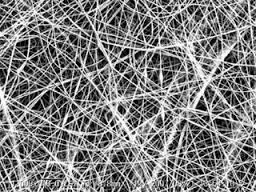Indoors air accelerated purification

A common issue that hotels, conference rooms, and other densely populated indoor spaces is the rapid deterioration of air quality, mainly due to CO2 emission by human breathing activities. Acceptable carbon dioxide concentrations are known but rarely monitored during such events. It is straight forward for one to calculate the increase in carbon dioxide concentration in closed spaces as a function of space volume, human presence and time. This would be a static approach, accurate enough for a closed [not air conditioned or air ventilated] space. In order to successfully and accurately predict the carbon dioxide levels [profiles] throughout a ventilated space, transport equations should also be used.
Current approaches in air purification include air filters based on activated carbon, zeolites and other low cost porous media. Although they are really effective, the kinetics of adsorption are deemed slow and usually a forced flow through them is used, especially in cases with peek densities of human presence. In our relevant work, we were asked to work on a ‘filter’ that would demonstrate faster kinetics, thus better profiling of carbon dioxide concentrations [even at low levels of 200-350 ppm] with a reduced requirement for forced air movement. In this project, we utilized initially Computational Chemistry simulations to study the kinetics of carbon dioxide in a range of potential adsorbents such as:
- Ionic Liquids
- Graphene
- Graphene Oxide
- Graphitic Fibers
- Activated carbons
During our simulations we identified optimum solutions for faster carbon dioxide adsorption [some times chemisorption] onto the adsorbents used. We also prepared simulations on combined adsorbents with respective support media]. In a second step we utilized Computational Fluid Dynamics Simulations to estimate the profiles of carbon dioxide in indoor environments under different scenarios:
a- Closed system with typical activated carbon dioxide purifier
b- Closed system with NOVEL carbon dioxide purifier
c- Open system with typical activated carbon dioxide purifier
d- Open system with NOVEL carbon dioxide purifier

Closed systems improved the kinetics of carbon removal by 39 - 54% and the carbon dioxide levels by 9-14% depending on the system properties [initial carbon dioxide level, volume, human presence]. Open systems improved the kinetics of carbon removal by 39 - 68% and the carbon dioxide levels by 16-32% depending on the system properties [initial carbon dioxide level, volume, human presence]. Continuous work on this projects aims at optimizing the adsorbents identified and potential combinations with other compounds not examined yet in this project.
